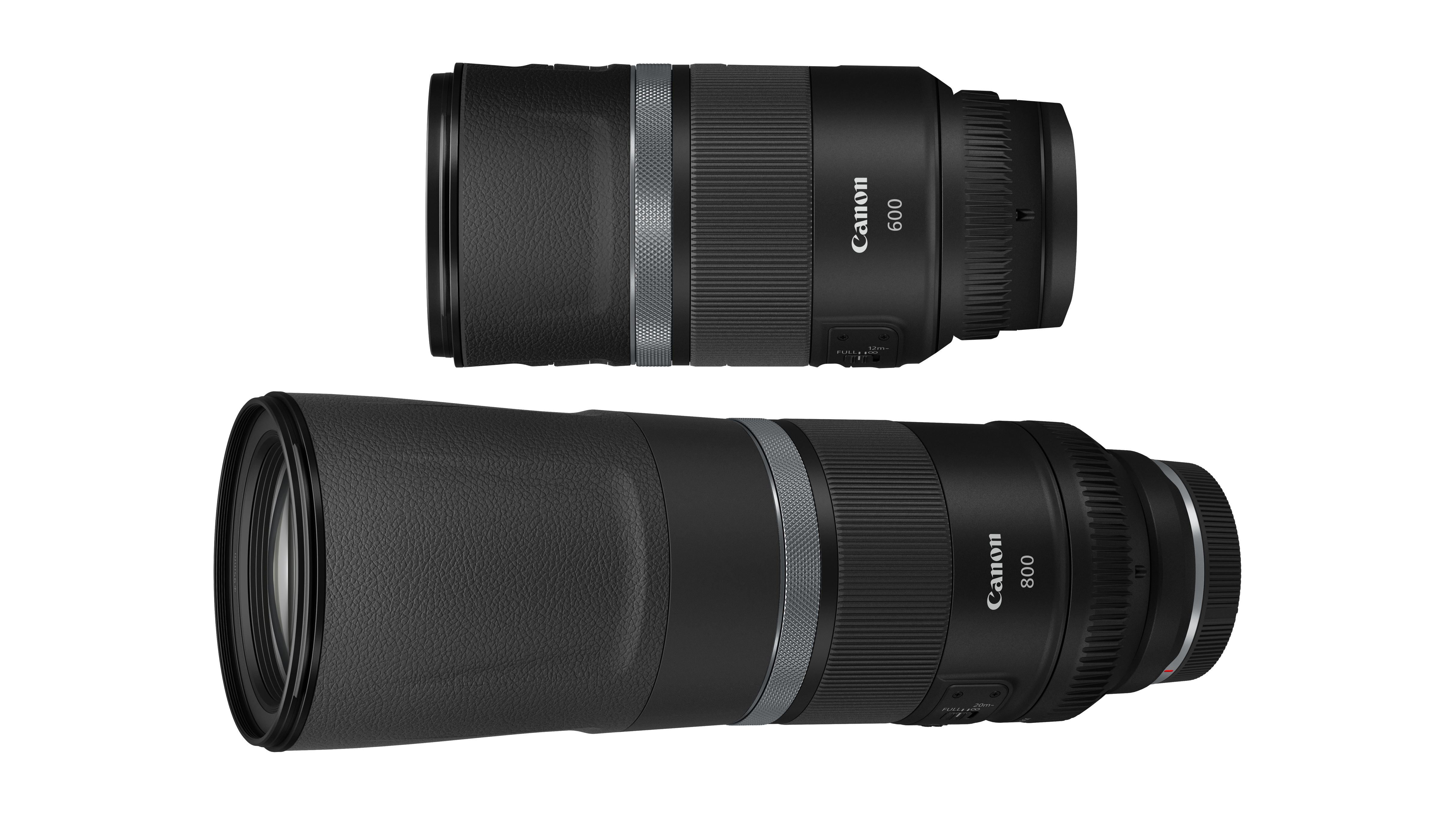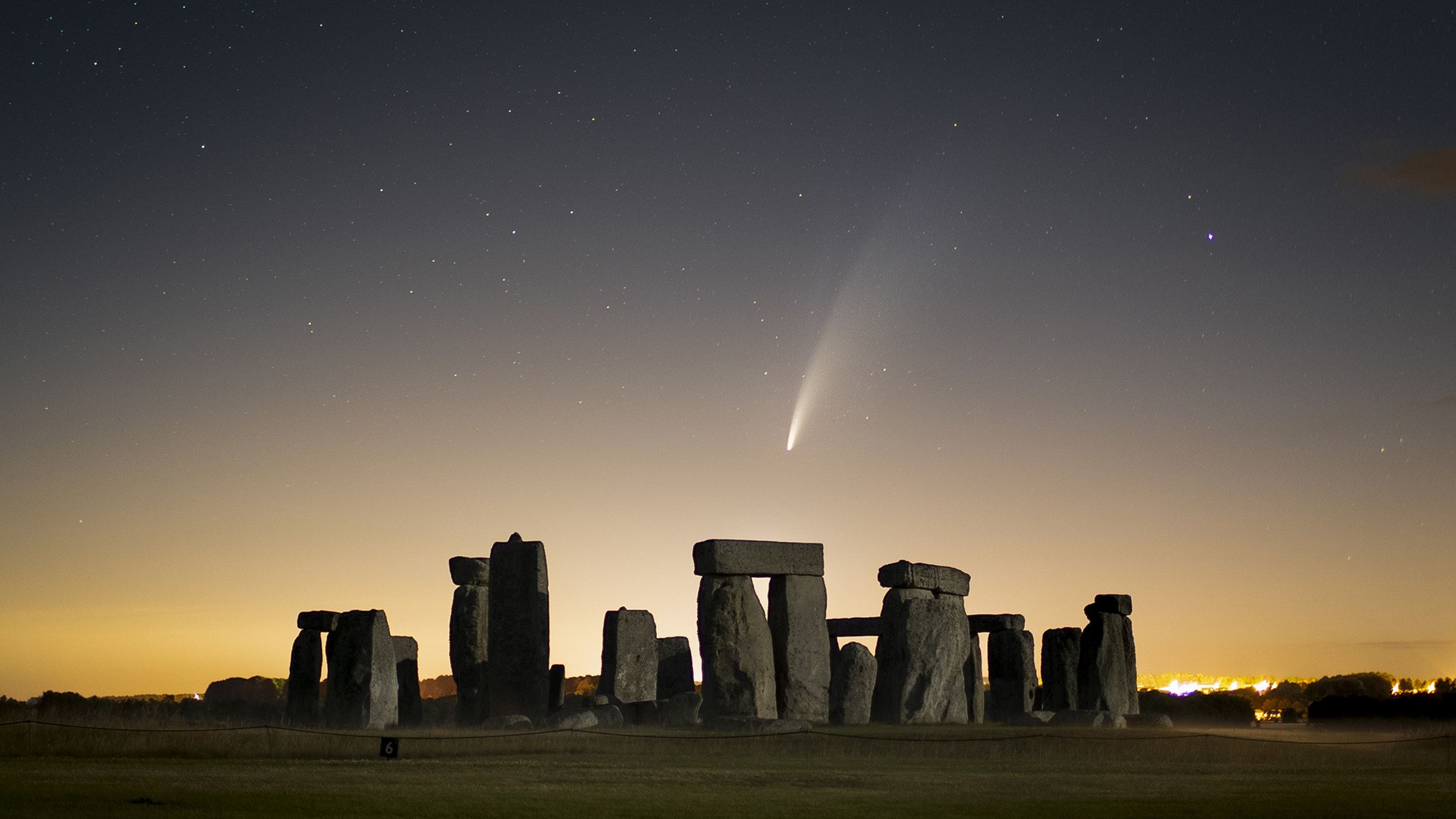
Enter the ‘new normal’ when it comes to Canon’s new super small and light budget mega-telephoto prime lenses for mirrorless cameras – the long and slender Canon RF 800mm f/11 IS STM and Canon RF 600mm f/11 IS STM lenses. Both primes are super-long, super lightweight and super affordable, yet both have a fixed aperture of f/11.
These sleek, black, budget telephotos both have image stabilization, with the Canon RF 800mm f/11 IS STM possessing 4 stops of IS, and the Canon RF 600mm f/11 IS STM offering 5 stops. And the IS on the lenses also syncs with the in-body image stabilization on the Canon EOS R5 and Canon EOS R6.
However, let’s talk about the elephant in the room: these prime lenses have a fixed aperture of just f/11. Only f/11! It’s this narrow aperture that has enabled Canon to make these lenses smaller, lighter and cheaper – but f/11 is 2 stops slower than f/5.6, and 4 stops slower than f/2.8.
While the optical viewfinders on DSLRs could make them less practical, Canon is keen to point out that shooting with the R-system’s electronic viewfinders (which brightens the view of what you’re shooting) makes the primes easy to work with. On top of that, the more advanced AF on the R family of cameras provides a big assist.
In fact, even when the lenses are paired with the new RF 1.4 and 2x teleconverters, the Dual Pixel CMOS AF II on the EOS R5 and R6 still provides full eye, face, head and animal AF tracking. So even with the 2x converter, shooting at 1,600mm f/22, you still get the same autofocus performance – just in a more concentrated AF area (similar to the central luster of AF points found on EOS DSLRs).
Canon says that lens’ fixed apertures provide perfectly circular bokeh and, although shooting at f/11, their super-long focal length enables photographers to blur the background ‘sufficiently’ when photographing subjects in the distance.
Still, shooting at f/11 means that your shutter speeds will be much slower compared to telephoto zooms with faster apertures. As a comparison, say that you’re shooting action sports at f/2.8 with a shutter speed of 1/500 sec; if you’re then restricted to f/11, your shutter speed would be much slower and only 1/30 sec.
Get the Digital Camera World Newsletter
The best camera deals, reviews, product advice, and unmissable photography news, direct to your inbox!
Canon also emphasized the ability to shoot at higher ISOs without fear of noise on its R-system cameras, so you can obtain faster shutter speeds by upping the ISO. Although it did admit that, if you’re shooting motor racing on dark winter days at f/11, it will be tricky to focus or get fast shutter speeds – so these lenses will be better suited to shooting on safari on bright sunny days.
Certainly, travelling with these lenses is now very practical thanks to their compact and lightweight designs. The RF 800mm f/11 weighs 1,260g and is only 281.1mm collapsed and 352mm when fully extended (compared to the 4,500g and 461mm of the Canon EF 800mm f/5.6L IS USM). The RF 600mm f/11 is even smaller and lighter, at just 930g and 199.5mm collapsed or 269.5mm at full extension (next to the 3,050g and 448mm of the Canon EF 600mm f/4L IS III USM).
Both lenses will be available from 30 July, with the Canon RF 800mm f/11 IS STM priced at $899.99 / £979 (AU$1,767) and the Canon RF 600mm f/11 IS STM costing $699.99 / £749 (AU$1,352).
Read more:
Hands on: Canon EOS R5 review
Hands on: Canon EOS R6 review
Best Canon RF lenses: the best lens for Canon EOS R5, R6, R and RP
How to use the Aperture Priority mode
Digital Camera World is one of the leading authorities on camera and photography news, reviews, techniques, tutorials, comparisons, deals and industry analysis. The site doesn't just specialize in cameras, but all aspects of photography, videography and imaging – including camera phones, gimbals, lenses, lighting, editing software, filters, tripods, laptops, printers, photo books, desks, binoculars and more.
Whether you're using, looking to buy or trying to get the most out of a compact camera, action camera, camera drone, cinema camera, beginner camera or professional camera, Digital Camera World has a roster of experts with combined experience of over 100 years when it comes to cameras, photography and imaging.

